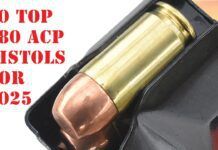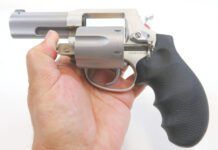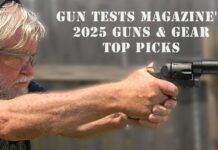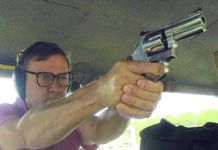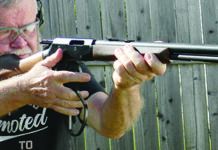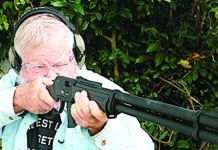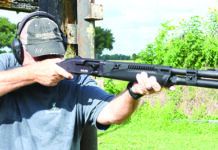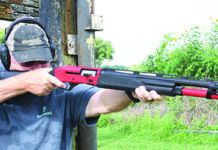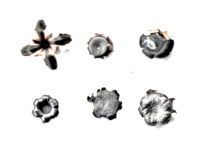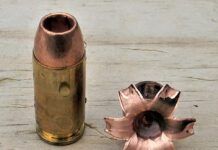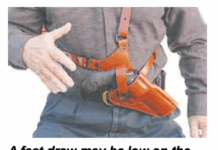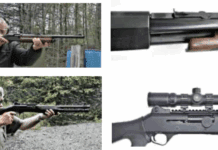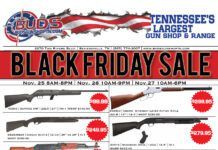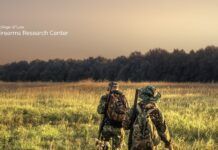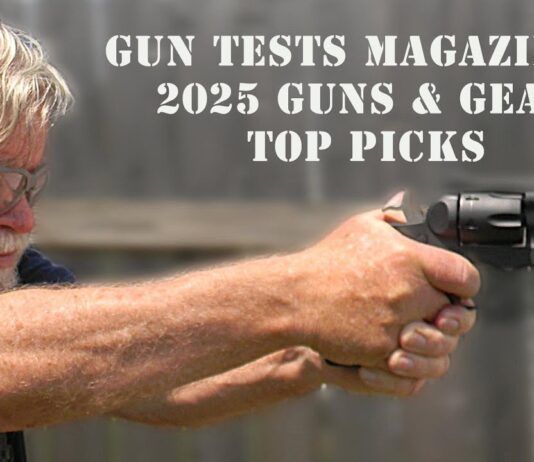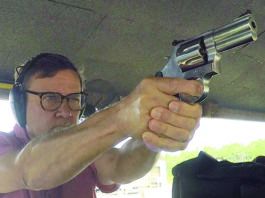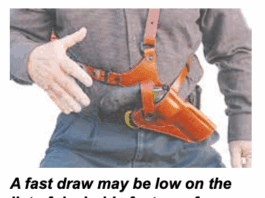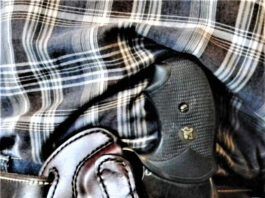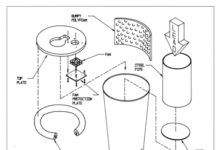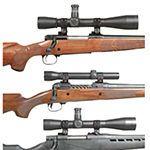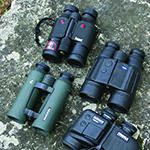GOA: Biden Proposals Would Affect 50-80% of All Guns
Colt Partners With Lasermax,Offers Centerfire Laser Series for Colt Mustang
Ruger Super Redhawk Grip Upgrade
The results of my tests showed that the Ruger Super Redhawk was a fine piece. But, I wasn't impressed with the supplied grip in terms of soaking up recoil.
‘Heritage Edition’ Canal Street Cutlery High Country Skinner is 2013 SHOT Show Auction Knife
Illinois Gun and Magazine Ban Measures Move Out of Committee
FBI Reports Record Gun Sales Last Month — Up 1 Million over December 2011
Wild Bunch Holster Brings Practical Shooting Full Circle
Michigan State House passes bill allowing concealed weapons in schools, day care centers, stadiums,...
‘Armageddon Arsenals’ Debuts on Discovery
Manufacturing an In-Shop Shooting Drum
In the course of a typical day's gunsmithing, I test fire at least three weapons for such things as inconsistent primer ignition, failure to feed properly, and sear disengagement. With the cost of commercial bullet traps somewhere in the stratosphere, I had no choice but to make my own to keep costs down. My indoor trap, which I use for pistols and rimfire rifles, cost less than $25 to build. Even if you use brand new materials, it should cost less than $100.
Light 308 Win. Bolt Rifles: Winchester, Savage, Mossberg
The 308 cartridge lends itself to being chambered in light rifles. The cartridge performs quite well on deer-size animals, and also it's lots of fun to plink with, given the easy accessibility to inexpensive ammo. For this test we looked at three light 308s. These were a Winchester Model 70 Featherweight Compact ($880), a Savage 11/111 Lightweight Hunter ($899), and a Mossberg 4X4 No. 27656, $471). We were unable to obtain a walnut-stocked Mossberg for a better comparison, but they are offered at $624, quite a jump from the black-plastic-stocked test rifle. We tested with Remington Core-Lokt 150-grain, Winchester Super X 180-grain, and with Remington Core-Lokt 180-grain loads. Here's what we found.
Range-Finding Binoculars: Zeiss, Steiner, Bushnell, and Swarovski
Adding a rangefinder to binoculars seems like a logical combination of technology. Not only does it mean carrying less equipment, there's less fumbling between binocs and range finder when a target comes into view. All things equal, we initially thought the only downside would be a heavier set of binoculars. We did find the combined technologies added about 11 ounces on average to the binoculars. A pair of Swarovski EL 10x42 binoculars used as the control in our test weighed 29.6 ounces.
The combination of technologies does increase the price, but if you were to purchase a comparable laser rangefinder and binoculars separately, you would approach the same cost. If you are frugal, you could purchase each piece of equipment separately at a significantly lower total cost, but the quality and durability may be compromised. If you are on the fence about paying more for a pair of quality binoculars, then look at any guide who knows his stuff. That guide will be using the best optics he can afford because hunting game means finding game, which is where the binocs come in. The rangefinder feature provides the distance to the beast quickly, so a shot can be taken.


